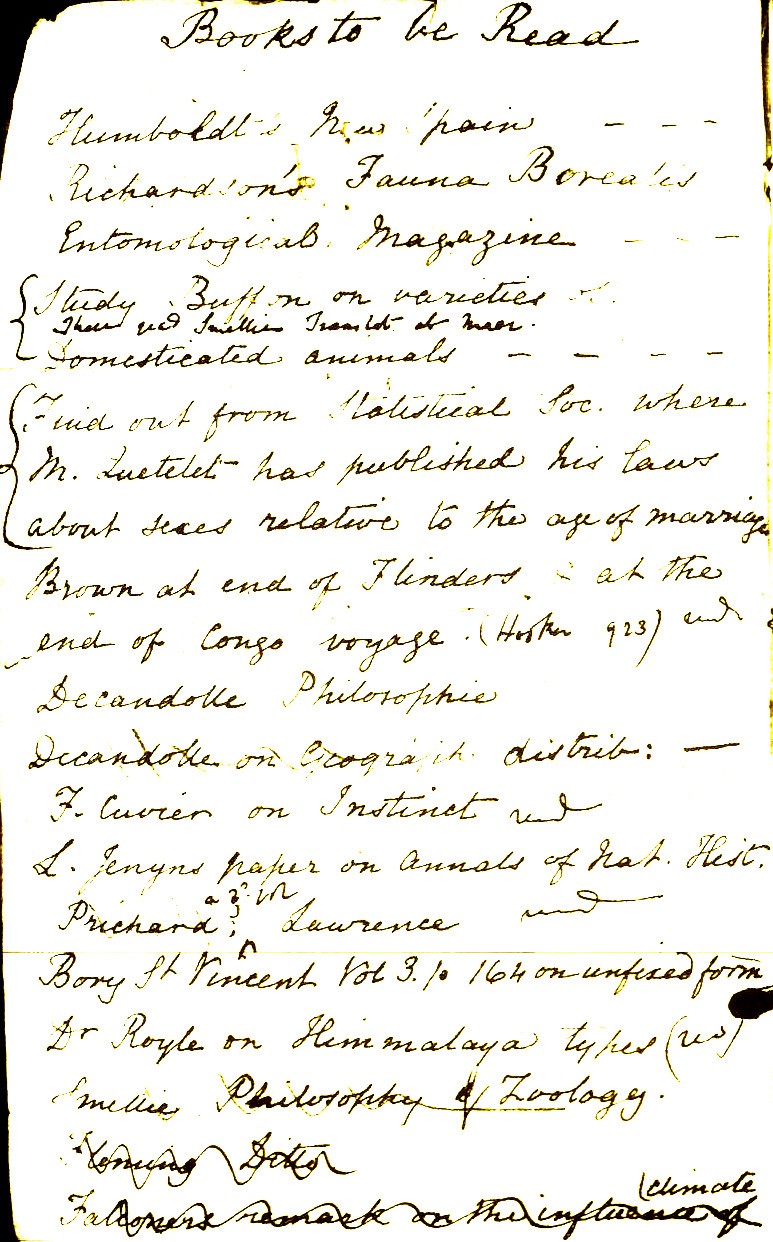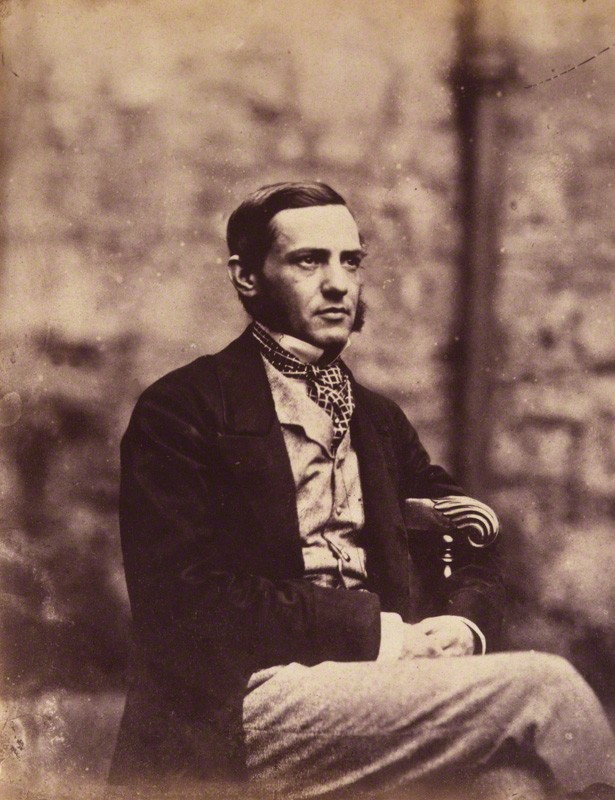From Alpheus Hyatt [late] November 1872
Summary
No need to apologise for not quoting AH’s paper on acceleration and retardation.
Agassiz introduced AH to ammonites and entrusted collection to him. Has followed developmental history of each species and placed them within geological formations. Found evolutionary history of species recapitulated only to a degree in individual development. Stages frequently skipped. Explains why young of later animals are like adults that preceded them. Retardation entirely idea of Edward Drinker Cope. Sends paper to explain it. Acceleration can explain degraded forms. Often like youthful stage with which series began. Often resemble old age of earlier series. Regularity of these series incompatible with natural selection. How can selection account for degraded final stages or for predictability of development? Franz Hilgendorf’s Paludinae from Steinheim lake show same parallelism in development. May be possible to reconcile this with selection. But Trochiformis begins to show degradation in beds where it is most numerous and has largest individuals, i.e., where selection seems to be favouring it. Will work on Steinheim shells this winter.
| Author: | Alpheus Hyatt |
| Addressee: | Charles Robert Darwin |
| Date: | [late] Nov 1872 |
| Classmark: | DAR 99: 48–55 |
| Letter no: | DCP-LETT-8655 |
Matches: 1 hit
- … 1856–8 , p. 35, the strata associated with Ammonites bucklandi (Bucklandibett) was equivalent to the English ‘blue Lias’. Oppel associated A. brooki (now Caenisites brooki ) with the Obtususbett, two levels above the Bucklandibett ( ibid. , p. 14). Hyatt refers to Alcide Charles Victor Dessalines d’Orbigny. Oscar Fraas . See letter …
| letter | (1) |
| Hyatt, Alpheus | (1) |
| Darwin, C. R. | (1) |
| Darwin, C. R. | (1) |
| Hyatt, Alpheus | (1) |

Darwin in letters, 1856-1857: the 'Big Book'
Summary
In May 1856, Darwin began writing up his 'species sketch’ in earnest. During this period, his working life was completely dominated by the preparation of his 'Big Book', which was to be called Natural selection. Using letters are the main…
Matches: 1 hits
- … On 14 May 1856, Charles Darwin recorded in his journal that he ‘Began by Lyell’s advice writing …

Darwin and Fatherhood
Summary
Charles Darwin married Emma Wedgwood in 1839 and over the next seventeen years the couple had ten children. It is often assumed that Darwin was an exceptional Victorian father. But how extraordinary was he? The Correspondence Project allows an unusually…
Matches: 1 hits
- … Charles Darwin married Emma Wedgwood in 1839 and over the next seventeen years the couple had ten …
Dramatisation script
Summary
Re: Design – Adaptation of the Correspondence of Charles Darwin, Asa Gray and others… by Craig Baxter – as performed 25 March 2007
Matches: 1 hits
- … Re: Design – performance version – 25 March 2007 – 1 Re: Design – Adaptation of the …

Origin
Summary
Darwin’s most famous work, Origin, had an inauspicious beginning. It grew out of his wish to establish priority for the species theory he had spent over twenty years researching. Darwin never intended to write Origin, and had resisted suggestions in 1856…
Matches: 1 hits
- … Darwin’s most famous work, Origin, had an inauspicious beginning. It grew out of his wish to …

Six things Darwin never said – and one he did
Summary
Spot the fakes! Darwin is often quoted – and as often misquoted. Here are some sayings regularly attributed to Darwin that never flowed from his pen.
Matches: 1 hits
- … Spot the fakes! Darwin is often quoted – and as often misquoted. Here are some sayings regularly …
Dates of composition of Darwin's manuscript on species
Summary
Many of the dates of letters in 1856 and 1857 were based on or confirmed by reference to Darwin’s manuscript on species (DAR 8--15.1, inclusive; transcribed and published as Natural selection). This manuscript, begun in May 1856, was nearly completed by…
Matches: 1 hits
- … Many of the dates of letters in 1856 and 1857 were based on or confirmed by reference to Darwin’s …
Women’s scientific participation
Summary
Observers | Fieldwork | Experimentation | Editors and critics | Assistants Darwin’s correspondence helps bring to light a community of women who participated, often actively and routinely, in the nineteenth-century scientific community. Here is a…
Matches: 1 hits
- … Observers | Fieldwork | Experimentation | Editors and critics | Assistants …

Descent
Summary
There are more than five hundred letters associated with the research and writing of Darwin’s book, Descent of man and selection in relation to sex (Descent). They trace not only the tortuous route to eventual publication, but the development of Darwin’s…
Matches: 1 hits
- … ‘ Our ancestor was an animal which breathed water, had a swim-bladder, a great swimming …

Species and varieties
Summary
On the origin of species by means of natural selection …so begins the title of Darwin’s most famous book, and the reader would rightly assume that such a thing as ‘species’ must therefore exist and be subject to description. But the title continues, …or…
Matches: 1 hits
- … On the origin of species by means of natural selection …so begins the title of Darwin’s most …

Darwin’s reading notebooks
Summary
In April 1838, Darwin began recording the titles of books he had read and the books he wished to read in Notebook C (Notebooks, pp. 319–28). In 1839, these lists were copied and continued in separate notebooks. The first of these reading notebooks (DAR 119…
Matches: 1 hits
- … In April 1838, Darwin began recording the titles of books he had read and the books he wished to …

Darwin in letters, 1882: Nothing too great or too small
Summary
In 1882, Darwin reached his 74th year Earthworms had been published the previous October, and for the first time in decades he was not working on another book. He remained active in botanical research, however. Building on his recent studies in plant…
Matches: 1 hits
- … In 1882, Darwin reached his 74th year Earthworms had been published the previous October, and …

Before Origin: the ‘big book’
Summary
Darwin began ‘sorting notes for Species Theory’ on 9 September 1854, the very day he concluded his eight-year study of barnacles (Darwin's Journal). He had long considered the question of species. In 1842, he outlined a theory of transmutation in a…
Matches: 1 hits
- … Darwin began ‘sorting notes for Species Theory’ on 9 September 1854, the very day he concluded his …
Scientific Networks
Summary
Friendship|Mentors|Class|Gender In its broadest sense, a scientific network is a set of connections between people, places, and things that channel the communication of knowledge, and that substantially determine both its intellectual form and content,…
Matches: 1 hits
- … Friendship | Mentors | Class | Gender In its broadest sense, a scientific …

Thomas Henry Huxley
Summary
Dubbed “Darwin’s bulldog” for his combative role in controversies over evolution, Huxley was a leading Victorian zoologist, science popularizer, and education reformer. He was born in Ealing, a small village west of London, in 1825. With only two years of…
Matches: 1 hits
- … Dubbed “Darwin’s bulldog” for his combative role in controversies over evolution, Huxley was a …

Darwin in letters, 1863: Quarrels at home, honours abroad
Summary
At the start of 1863, Charles Darwin was actively working on the manuscript of The variation of animals and plants under domestication, anticipating with excitement the construction of a hothouse to accommodate his increasingly varied botanical experiments…
Matches: 1 hits
- … At the start of 1863, Charles Darwin was actively working on the manuscript of The variation of …

Darwin in letters, 1872: Job done?
Summary
'My career’, Darwin wrote towards the end of 1872, 'is so nearly closed. . . What little more I can do, shall be chiefly new work’, and the tenor of his correspondence throughout the year is one of wistful reminiscence, coupled with a keen eye…
Matches: 1 hits
- … ‘My career’, Darwin wrote towards the end of 1872, ‘is so nearly closed. . . What little more I …
4.16 Joseph Simms, physiognomy
Summary
< Back to Introduction In September 1874, the American doctor Joseph Simms, then on a three-year lecture tour of Britain, sent Darwin a copy of his book, Nature’s Revelations of Character; Or, Physiognomy Illustrated. He was seeking a public…
Matches: 1 hits
- … < Back to Introduction In September 1874, the American doctor Joseph Simms, then on a …

Language: key letters
Summary
How and why language evolved bears on larger questions about the evolution of the human species, and the relationship between man and animals. Darwin presented his views on the development of human speech from animal sounds in The Descent of Man (1871),…
Matches: 1 hits
- … The origin of language was investigated in a wide range of disciplines in the nineteenth century. …

Hermann Müller
Summary
Hermann (Heinrich Ludwig Hermann) Müller, was born in Mühlberg near Erfurt in 1829. He was the younger brother of Fritz Müller (1822–97). Following the completion of his secondary education at Erfurt in 1848, he studied natural sciences at Halle and Berlin…
Matches: 1 hits
- … Hermann (Heinrich Ludwig Hermann) Müller, was born in Mühlberg near Erfurt in 1829. He was the …

Darwin in letters, 1858-1859: Origin
Summary
The years 1858 and 1859 were, without doubt, the most momentous of Darwin’s life. From a quiet rural existence filled with steady work on his ‘big book’ on species, he was jolted into action by the arrival of an unexpected letter from Alfred Russel Wallace…
Matches: 1 hits
- … The years 1858 and 1859 were, without doubt, the most momentous of Darwin’s life. From a quiet …



